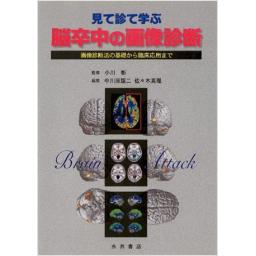2) Drayer BP, Wolfson SK, Reinmuth OM, et al : Xenon enhanced CT for analysis of cerebral integrity, perfusion, and blood flow. Stroke 9 : 123-130, 1978.
3) Meyer JS, Hayman LA, Yamamoto M, et al : Local cerebral blood flow measured by CT after stable xenon inhalation. AJR Am J Roentgenol 135 : 239-251, 1980.
4) Gur D, Good WF, Wolfson SK Jr., et al : In vivo mapping of local cerebral blood flow by xenon-enhanced computed tomography. Science 215 : 1267-1268, 1982.
5) 野川茂 : 脳血流画像検査の意義・有用性. 診断と治療 94 : 79-87, 2006.
6) 野川茂 : 血栓溶解療法に脳血流画像は必要か? 循環器科 59 : 45-51, 2006.
8) Latchaw RE, Yonas H, Pentheny SL, et al : Adverse reactions to xenon-enhanced CT cerebral blood flow determination. Radiology 163 : 251-254, 1987.
9) Good WF, et al : Technical aspects. Cerebral blood flow measurements with stable xenon-enhanced computed tomography, Yonas H, et al (eds), pp4-15, Raven Press, New York, 1992.
10) Meyer JS, Rauch GM : Why emergency XeCT-CBF should become routine in acute ischemic stroke before thrombolytic therapy. Keio J Med 49 (Suppl 1) : A25-A28, 2000.
11) 野川茂, 傳法倫久, 山口啓二, ほか : Xe/CTによる脳梗塞および出血性梗塞の脳血流-虚血閾値の検討. 脳循環代謝 15 : 188-189, 2003.
12) Horn P, Vajkoczy P, Thome C, et al : Xenon-induced flow activation in patients with cerebral insult who undergo xenon-enhanced CT blood flow studies. AJNR Am J Neuroradiol 22 : 1543-1549, 2001.
13) Hartmann A, Maul FD, Zimny M, et al : Impairment of left ventricular function during coronary angioplastic occlusion evaluated with a nonimaging scintillation probe. Am J Cardiol 68 : 598-602, 1991.
14) Giller CA, Purdy P, Lindstrom WW : Effects of inhaled stable xenon on cerebral blood flow velocity. AJNR Am J Neuroradiol 11 : 177-182, 1990.
15) Obrist WD, Zhang Z, Yonas H : Effect of xenon-induced flow activation on xenon-enhanced computed tomography cerebral blood flow calculations. J Cereb Blood Flow Metab 18 : 1192-1195, 1998.
16) Marks EC, Yonas H, Sanders MH, et al : Physiologic implications of adding small amounts of carbon dioxide to the gas mixture during inhalation of xenon. Neuroradiology 34 : 297-300, 1992.
17) 山下哲男, 柏木史郎, 中野茂樹 : Xe CT脳血流測定の基礎. キセノン CT ; 入門編. 山下哲男, ほか (編), pp1-26, にゅーろん社, 東京, 1991.
18) 南部恭次郎, 鈴木龍太 : キセノン CTの理論. キセノン CTによるClinical CBF Measurement, 鈴木龍太, ほか (編), pp11-29, にゅーろん社, 東京, 1993.
19) Kelcz F, Hilal SK, Hartwell P, et al : Computed tomographic measurement of the xenon brain-blood partition coefficient and implications for regional cerebral blood flow : a preliminary repork. Radiology 127 : 385-392, 1978.
20) 山下哲男, 柏木史郎, 中野茂樹 : 検査の合併症と問題点. キセノン CT ; 入門編, 山下哲男, ほか (編), pp92-95, にゅーろん社, 東京, 1991.
21) Nakano S, et al : Optimization of the inhalation protocol. Cerebral blood flow measurement with stable xenon-enhanced computed tomography, Yonas H (ed), pp40-45, Raven Press, New York, 1992.
22) Kalender WA, Polacin A, Eidloth H, et al : Brain perfusion studies by xenon-enhanced CT using washin/washout study protocols. J Comput Assist Tomogr 15 : 816-822, 1991.
23) Meyer JS, Hayman LA, Amano T, et al : Mapping local blood flow of human brain by CT scanning during stable xenon inhalation. Stroke 12 : 426-436, 1981.
24) Amano T, Meyer JS, Okabe T, et al : Stable xenon CT cerebral blood flow measurements computed by a single compartment-double integration model in normal aging and dementia. J Comput Assist Tomogr 6 : 923-932, 1982.
25) Kobari M, Fukuuchi Y, Shinohara T, et al : Levodopa-induced local cerebral blood flow changes in Parkinson's disease and related disorders. J Neurol Sci 128 : 212-218, 1995.
26) 傳法倫久, 野川茂, 本多満, ほか : キセノン CT. 急性期脳梗塞画像診断実践ガイドライン 2007, 興梠征典, ほか (編), 南江堂, 東京, 2007.
27) 野川茂, 傳法倫久, 山口啓二, ほか : 超急性期脳梗塞の病型診断におけるXe-CTの有用性 ; 連続22例における検討, 脳循環代謝 16 : 196-197, 2002.
28) Jones TH, Morawetz RB, Crowell RM, et al : Thresholds of focal cerebral ischemia in awake monkeys. J Neurosurg 54 : 773-782, 1981.
29) Kaufmann AM, Firlik AD, Fukui MB, et al : Ischemic core and penumbra in human stroke. Stroke 30 : 93-99, 1990.
30) Firlik AD, Kaufmann AM, Wechsler LR, et al : Quantitative cerebral blood flow determinations in acute ischemic stroke ; Relationship to computed tomography and angiography. Stroke 28 : 2208-2213, 1997.
31) Jovin TG, Yonas H, Gebel JM, et al : The cortical ischemic core and not the consistently present penumbra is a determinant of clinical outcome in acute middle cerebral artery occlusion. Stroke 34 : 2426-2433, 2003.
32) Firlik AD, Yonas H, Kaufmann AM, et al : Relationship between cerebral blood flow and the development of swelling and life-threatening herniation in acute ischemic stroke. J Neurosurg 89 : 243-249, 1998.
33) Firlik AD, Rubin G, Yonas H, et al : Relation between cerebral blood flow and neurologic deficit resolution in acute ischemic stroke. Neurology 51 : 177-182, 1998.
34) Gupta R, Yonas H, Gebel J, et al : Reduced pretreatment ipsilateral middle cerebral artery cerebral blood flow is predictive of symptomatic hemorrhage post-intra-arterial thrombolysis in patients with middle cerebral artery occlusion. Stroke 37 : 2526-2530, 2006.
